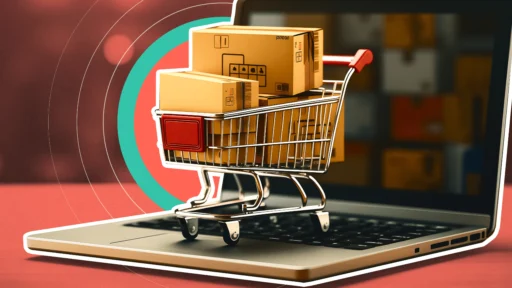The COVID-19 pandemic reshaped almost all aspects of our lives, e-commerce included. Although many sectors faced difficulties, e-commerce thrived and evolved by adapting to the evolving demands of a population amid a lockdown. What started as unintentional changes in purchasing patterns swiftly became regular habits.
Here are eight ways online consumers have changed since the pandemic, plus ways companies can capitalize on those changes.
1. PERMANENT DIGITAL SHIFT AND NEW DEMOGRAPHICS
One of the most significant effects of the pandemic on e-commerce was the swift growth of online shopping. Many people who previously shied away from shopping online, including the older demographic, became regular customers who found convenience in having everything from groceries to luxury items delivered right to their doorstep. According to Statista Global, online sales experienced a dramatic increase during the outbreak, a testimony to the technological shift.
To keep these new demographics, brands must expand their strategies to include things like user-friendly and accessible websites. Doing so can help retain and increase the number of older customers and those who never shopped online pre-pandemic. Continuous feedback loops like brief surveys or animated pop-ups can aid in continuously improving the user experience to their needs.
2. A VIRTUAL EXPERIENCE SHIFT
As physical stores began to close as part of the shutdowns, brands had to get creative. This ushered in the use of augmented reality (AR) to bridge the gap between offline and online shopping experiences.
To continue the traction of AR use in e-commerce, businesses should look beyond traditional graphics. Utilizing AR to provide interactive demos of products and/or 360-degree views, such as virtual store tours, can be crucial to continued business success. Working with tech companies specializing in AR can help businesses gain an edge by making passive browsing an interactive shopping experience.
3. HEALTH AND SAFETY IS MORE THAN A PASSING TREND
Online consumers became hyper-aware of things like safe packaging and secure delivery. Post-pandemic, it seems these health-and-safety-focused strategies have become the norm.
Continuous transparency is essential. Brands should be sure to continue to emphasize sanitization procedures, use tamper-proof packaging, and keep the option of contactless delivery. Safety and health are now critical indicators of trust for brands. Ensuring that procedures remain integral to the brand’s promise keeps customers committed.
4. THE GREEN REVOLUTION IS GAINING TRACTION
The boom in online shopping during the pandemic revealed severe environmental impacts, particularly in packaging waste.
It’s time for businesses to consider going green. Switch to biodegradable and recyclable packaging, and promote the concept of “green” shopping carts that are eco-friendly and offer options for carbon-neutral shipping. Publicizing these initiatives appeals to environmentally-conscious consumers and positions your brand as a responsible market leader.
5. THE RISE OF THE DIGITAL WALLET
Somewhere between 2020 and today, there was a shift towards electronic wallets, contactless payment, and crypto. Not only were these payment strategies physically safer during the pandemic, but they continue to provide the security and diversification consumers crave.
Today’s businesses should be offering various payment options, including traditional credit card payment, Apple Pay and Google Wallet, or even cryptocurrencies. Making sure transactions are secure and encrypted will increase confidence among clients and encourage them to make more frequent purchases.
6. CONSUMERS CRAVE AUTHENTIC CONNECTIONS
The pandemic highlighted the importance of empathy, understanding, and genuine connection. People began to feel connections with brands that communicated authentically and showed their humanity.
And that doesn’t look to be changing any time soon. Personalization is an essential differentiator in an increasingly competitive world dominated by AI and automation. Businesses should consider focusing on personalized messages, such as customized products or handwritten thank-you notes inside shipments. Chat sessions or virtual consults, which allow customers to connect directly with brand representatives or the company’s leadership, could help bridge the digital gap.
7. HOLISTIC SHOPPING EXPERIENCES
The pandemic witnessed the development of hybrid retail strategies, where offline and online retail experiences started to blend.
Offering services such as buy online, pick-up in-store, or highlighting in-store inventory online can draw in tech-savvy customers who prefer the traditional shopping experience. Integration of online and offline loyalty programs and creating a seamless transition from physical and digital points of contact is crucial.
8. LOCALIZATION
Throughout the pandemic and beyond, consumers have been encouraged to support local businesses and those platforms focused on community.
Post-pandemic, businesses should continue to focus on building stronger relationships in their local areas. Participating in the local community’s virtual event, cooperating with local brands on discounts, or featuring local artisans within their product line can help build the spirit of community—something consumers crave. An “e-commerce with heart” approach can transform an organization from a marketplace to a community hub.
Navigating the post-pandemic e-commerce environment requires agility as well as foresight. Businesses that can adapt and anticipate upcoming shifts are better positioned to navigate the next wave of changes. Implementing these eight strategies can transform challenges into opportunities, and encourage connections and transactions in a rapidly changing digital environment.
CEO of Eric Javits, an expert in digital transformation, leveraging years of experience in digital marketing.
The final deadline for Fast Company’s World Changing Ideas Awards is Friday, December 12, at 11:59 p.m. PT. Apply today.







